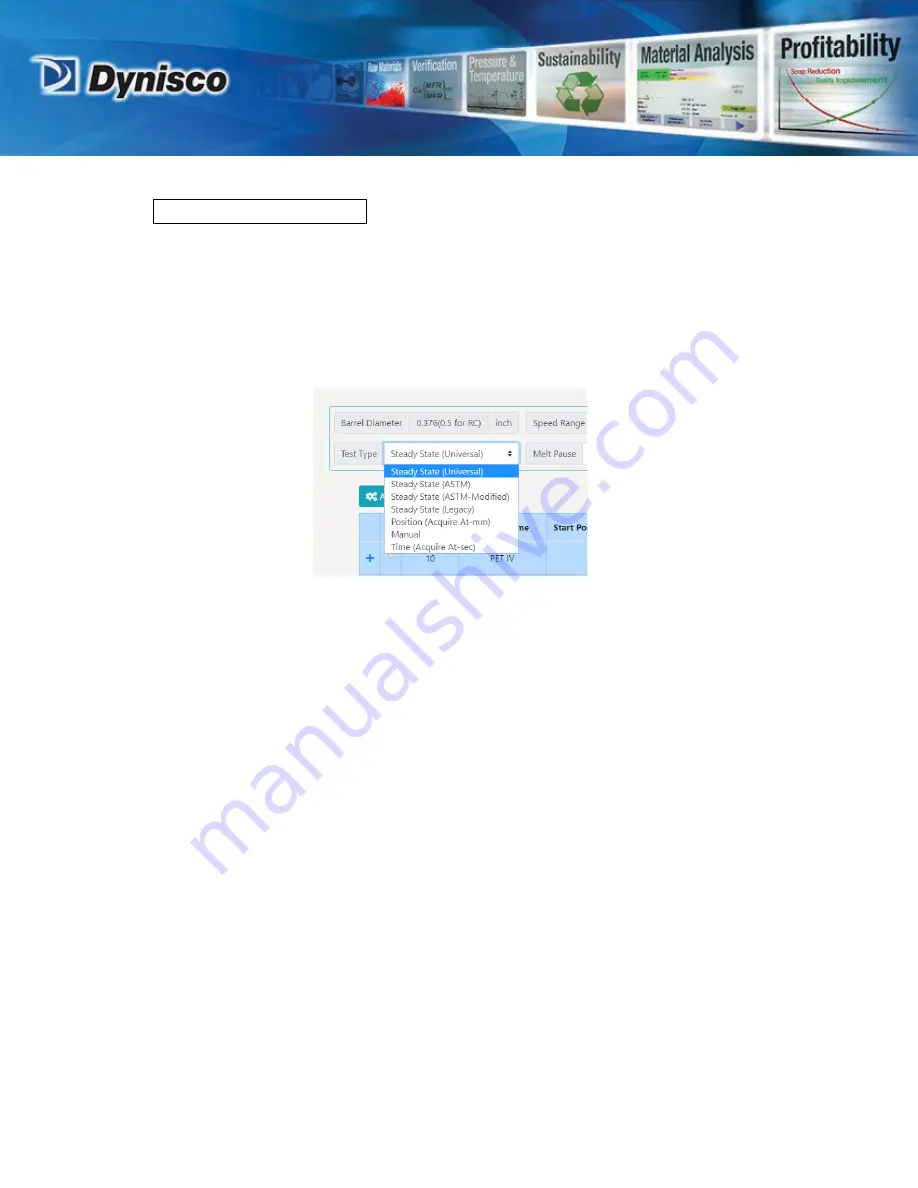
LCR7000 & RHEOSIGHTS P/N: 974194 |
Rev: A
|
ECO: 52468
www.dynisco.com
From lab to production,
providing a window into the process
-29-
You will need to specify the Mode of acquiring before you add a new test and it will be
attached to that specific test, but you can switch to another mode before you send the test.
This is done by selecting the Mode of Acquisition on your Test Setup page. Your choices of
acquisition are
Steady State (Universal), Steady State (ASTM), Steady State (ASTM-
Modified), Steady State (Legacy), Position (Acquire At-mm), Manual and Time (Acquire
At-sec).
Steady State/Manual
- In the
Steady State/ Manual
mode, real-time data is sent to the
computer from the instrument. Noise is filtered from the data and when a steady state
algorithm determines that the received data is steady, the computer grabs the average
force values, stores it and proceeds to the next point. The Manual mode is also active at the
same time with this setting, this gives the operator the option to presses the
"Acquire"
icon
to take the data reading and move onto the next point.
Four Steady State Algorithms:
Universal
:
This algorithm takes the physical limits of the LCR7000 and makes sure the test
will be finished no matter what kind of setup the user sets.
ASTM
:
This algorithm follows the ASTM standard and works better in lower shear rate
setup.
ASTM-Modified
:
This algorithm is a more conservative one based on ASTM, which does a
better job at filtering the error data.
Legacy
:
This algorithm tries to replicate the steady state algorithm used by the old LabKars
software.
3.
Data Acquisition Mode






























